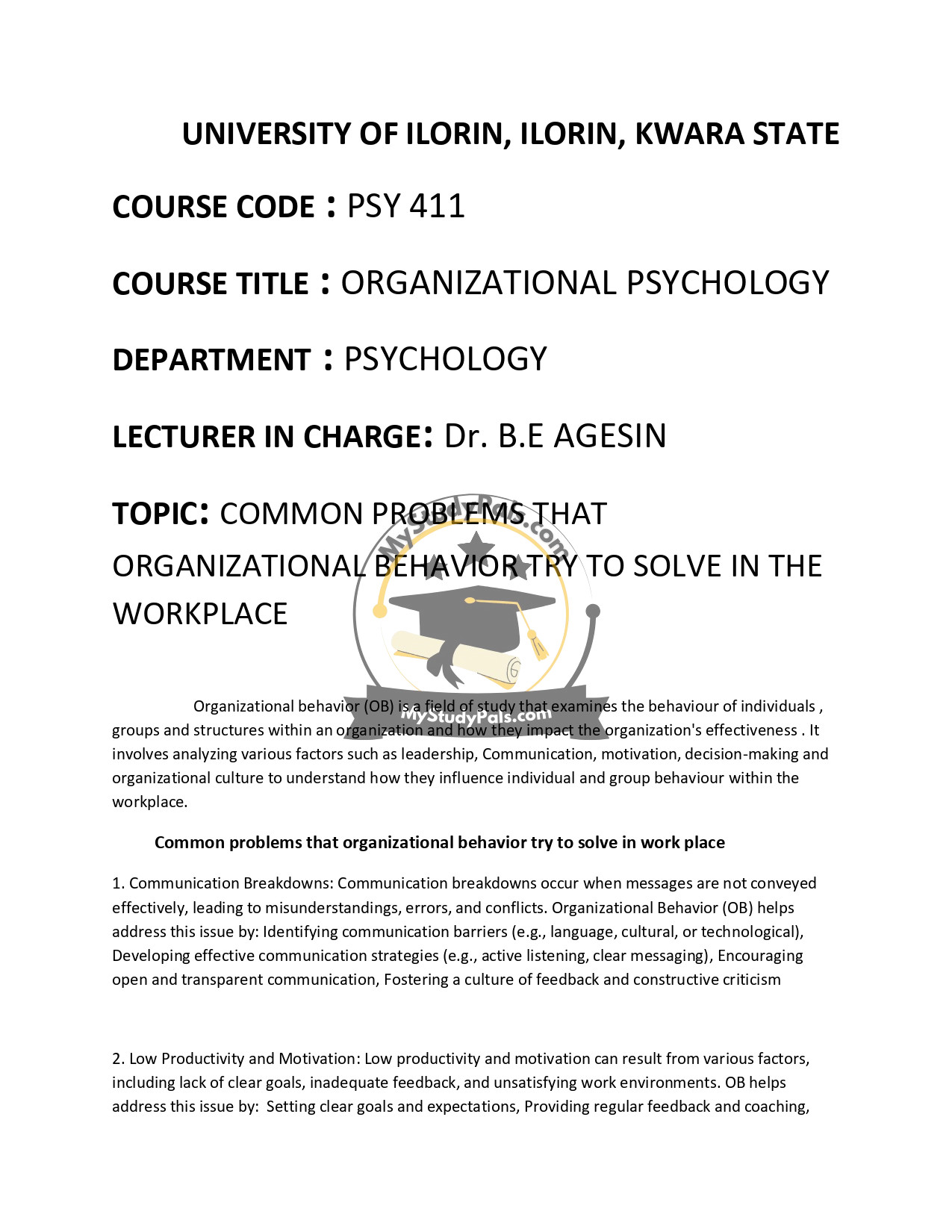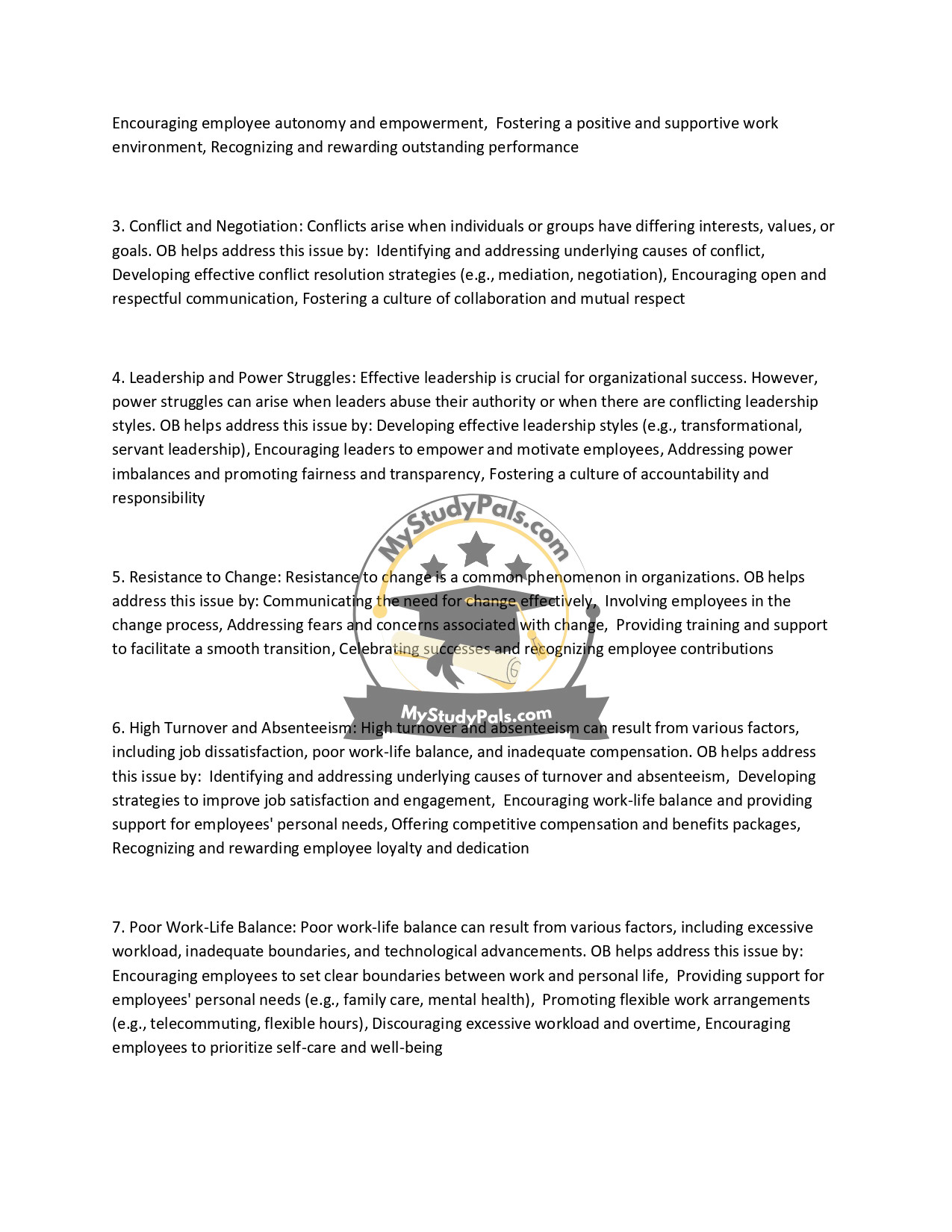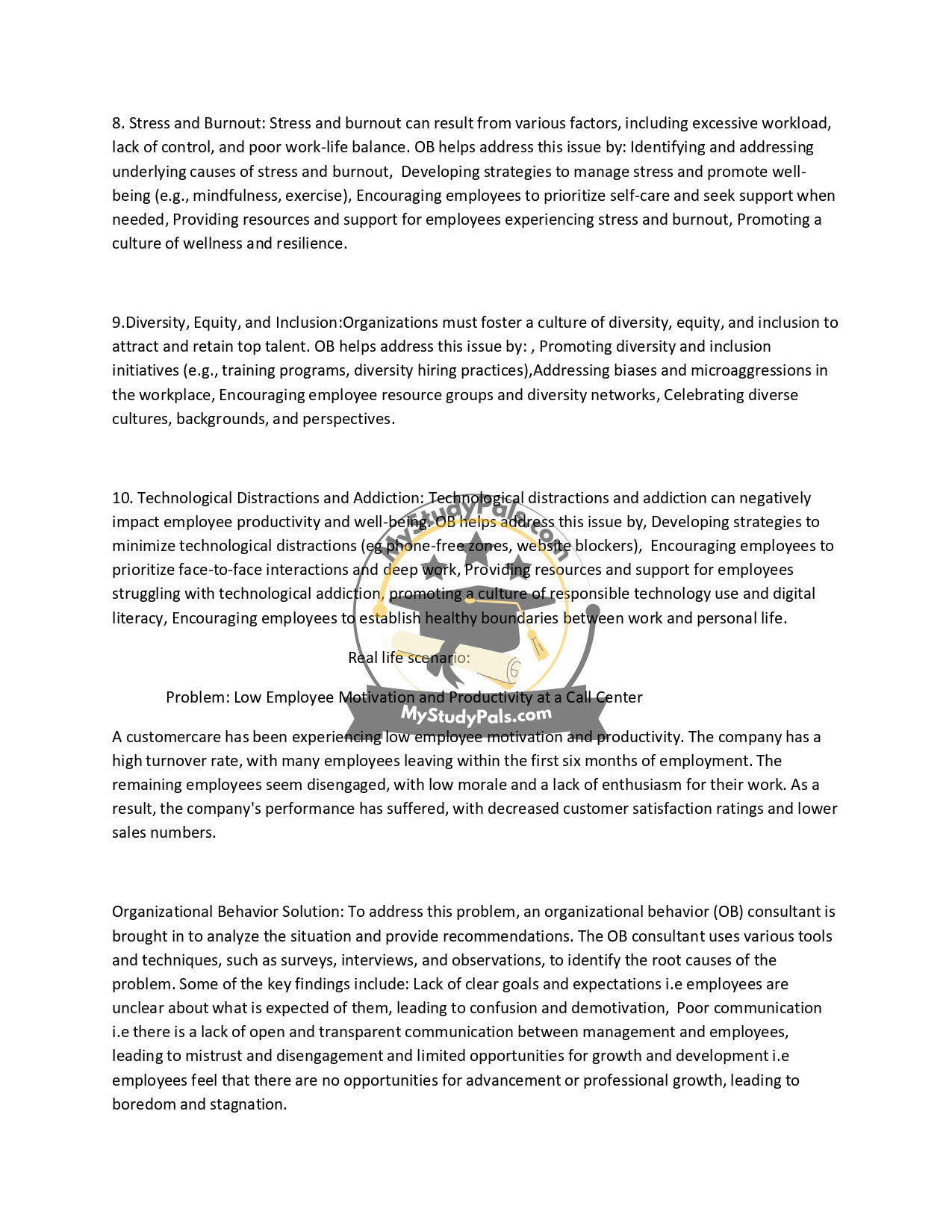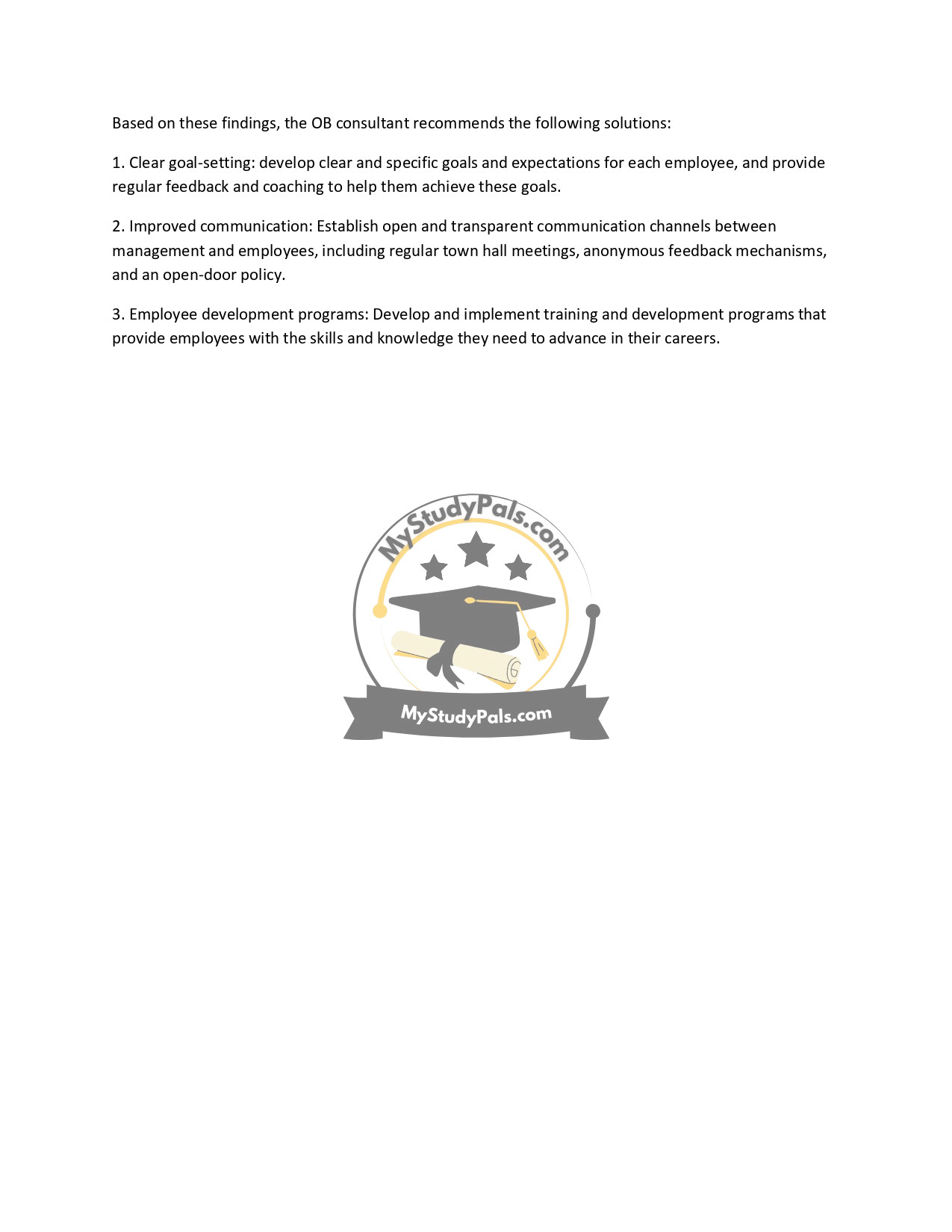ANSWERS
—
Question 1:
What is Organizational Behavior (OB), and what factors does it analyze?
Answer:
Organizational Behavior (OB) is a field of study that examines the behavior of individuals, groups, and structures within an organization and how they impact the organization’s effectiveness. It analyzes factors such as leadership, communication, motivation, decision-making, and organizational culture to understand their influence on individual and group behavior in the workplace.
—
Question 2:
List and explain four common workplace problems that Organizational Behavior aims to solve.
Answer:
1. Communication Breakdowns: OB addresses ineffective message conveyance by identifying barriers (e.g., language, culture) and promoting strategies like active listening and transparent communication.
2. Low Productivity and Motivation: OB tackles this by setting clear goals, providing feedback, encouraging autonomy, and fostering a supportive work environment.
3. Conflict and Negotiation: OB resolves conflicts by addressing underlying causes, using mediation, and promoting respectful communication and collaboration.
4. Resistance to Change: OB mitigates resistance by involving employees in change processes, addressing fears, and providing training and support.
—
Question 3:
How does Organizational Behavior address high turnover and absenteeism in the workplace?
Answer:
OB addresses high turnover and absenteeism by:
– Identifying root causes (e.g., job dissatisfaction, poor work-life balance).
– Improving job satisfaction and engagement through recognition and rewards.
– Offering competitive compensation and benefits.
– Supporting work-life balance and personal needs.
—
Question 4:
Describe a real-life scenario where OB solved low employee motivation and productivity in a call center.
Answer:
Scenario: A call center faced low motivation, high turnover, and disengagement, leading to poor performance.
OB Solutions:
1. Clear Goal-Setting: Defined specific goals and provided regular feedback.
2. Improved Communication: Established town hall meetings and anonymous feedback channels.
3. Development Programs: Offered training for career advancement.
These steps boosted morale, reduced turnover, and improved productivity.
—
Question 5:
What strategies does OB recommend to promote diversity, equity, and inclusion in organizations?
Answer:
OB promotes diversity, equity, and inclusion by:
– Implementing training programs and diversity hiring practices.
– Addressing biases and microaggressions.
– Supporting employee resource groups.
– Celebrating diverse cultures and perspectives.
—
Question 6:
How can OB help employees manage stress and burnout?
Answer:
OB addresses stress and burnout by:
– Identifying causes (e.g., excessive workload).
– Promoting stress-management techniques (e.g., mindfulness).
– Encouraging self-care and providing support resources.
– Fostering a culture of wellness and resilience.
—





